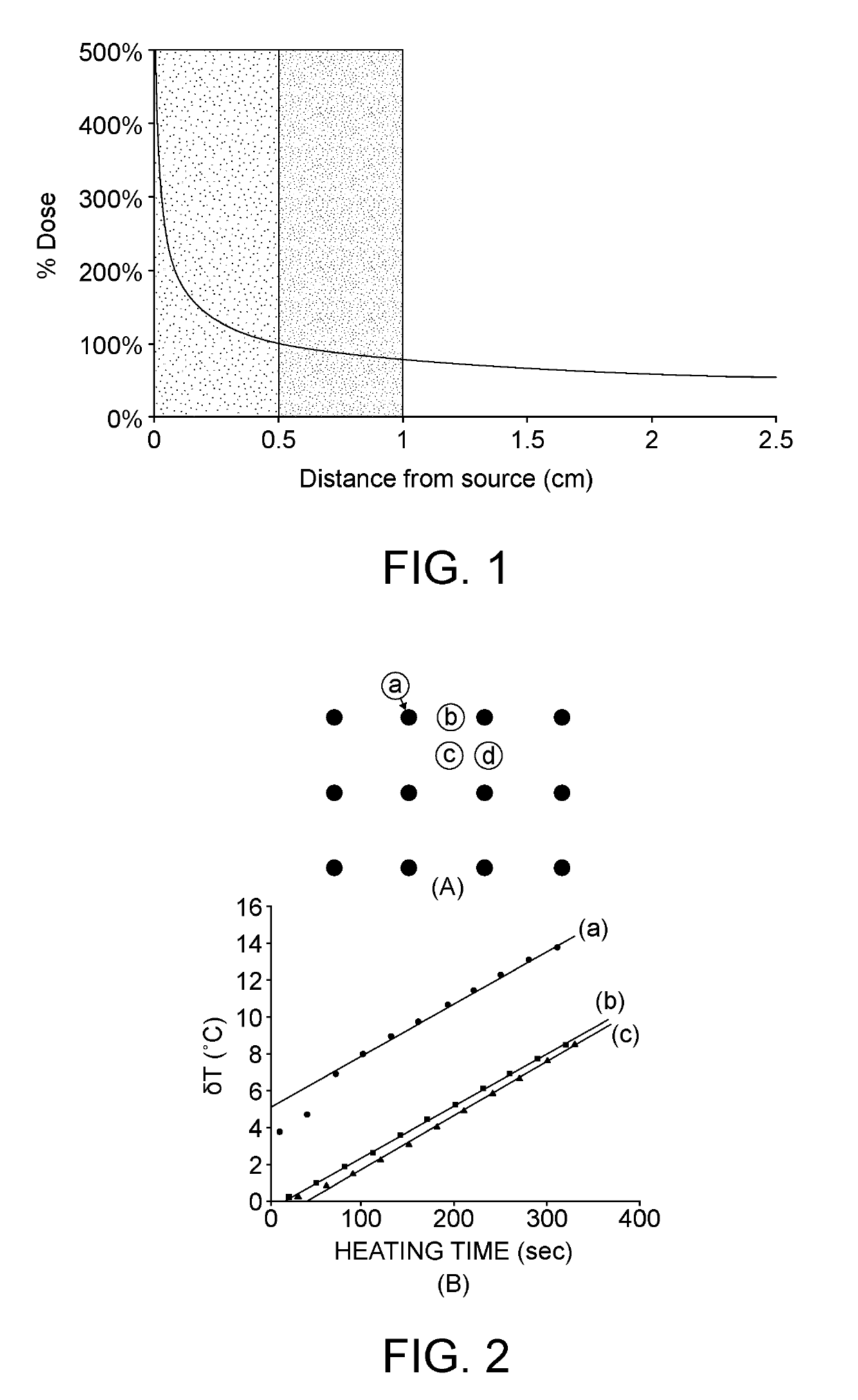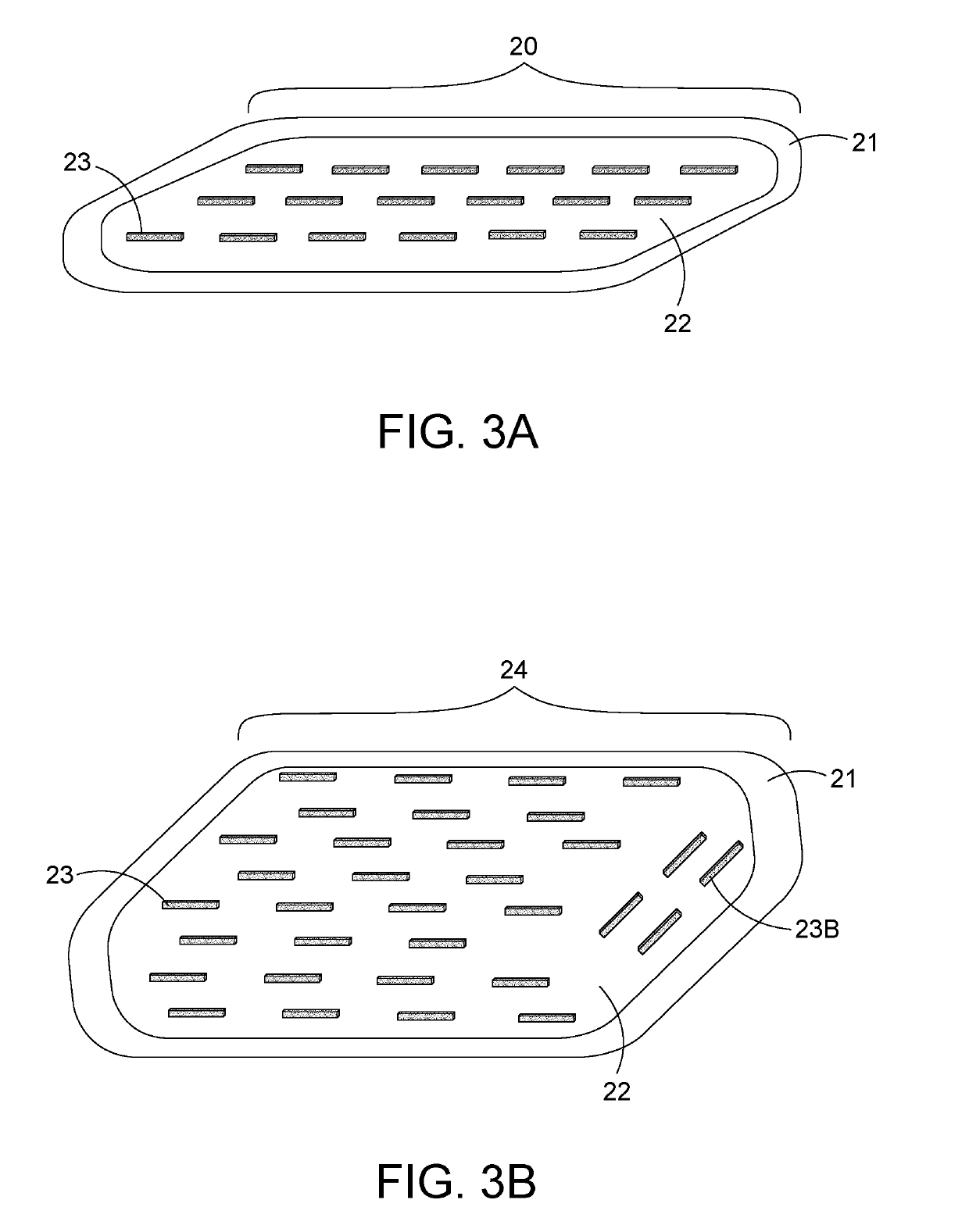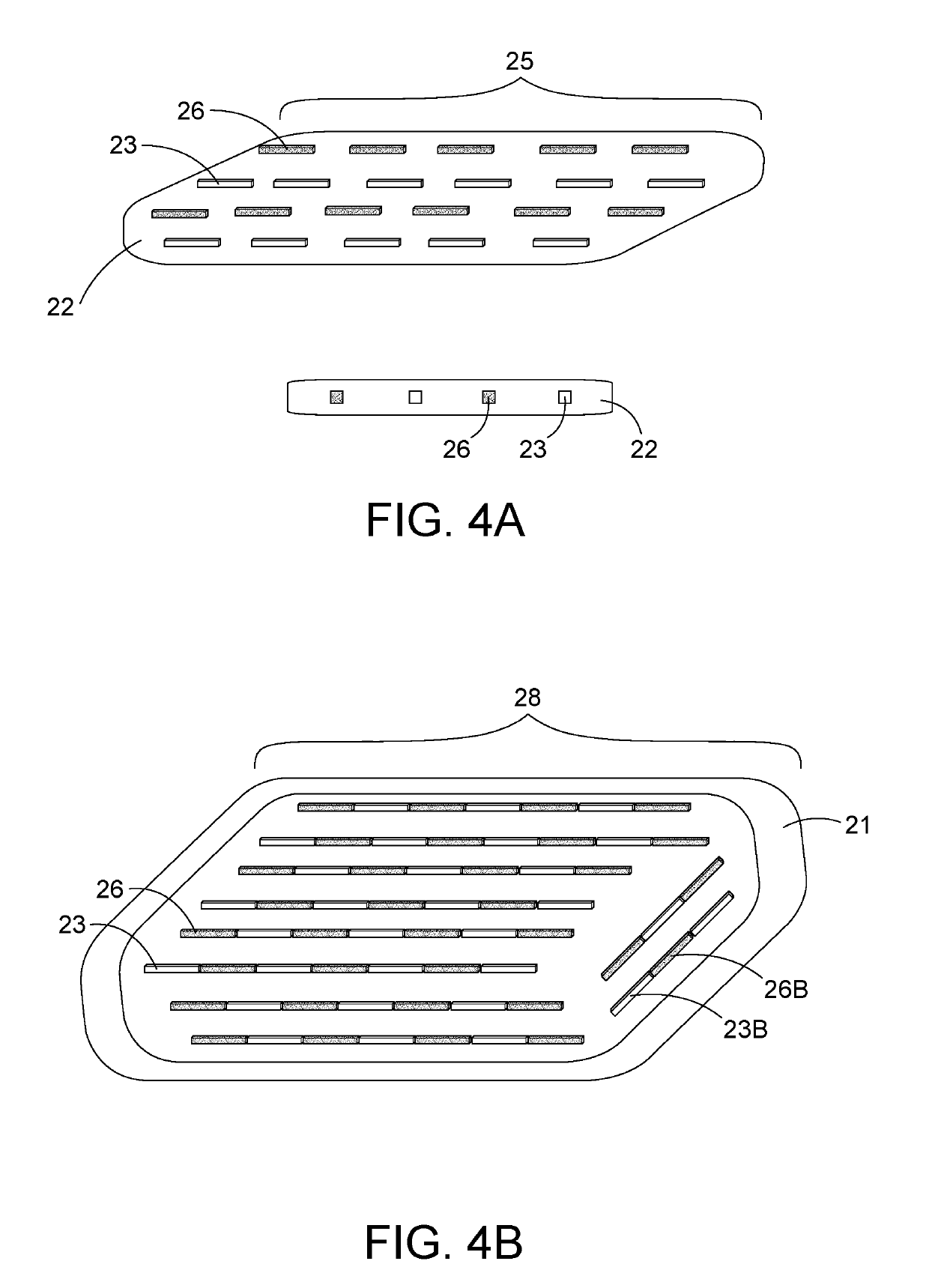Tumor bed implant for multimodality treatment of at risk tissue surrounding a resection cavity
a tumor bed and multi-modality technology, applied in the field of biocompatible implant devices, can solve the problems of non-uniform radiation dose around seed strings sewn directly to the tissue wall of tumor resection cavities with irregular shape, tissue immediately surrounding excised tumor volume is at risk for tumor regrowth from remaining, and second tumoricidal radiation dose is not possible, so as to reduce treatment complications and improve dose uniformity. , the effect of low toxicity
- Summary
- Abstract
- Description
- Claims
- Application Information
AI Technical Summary
Benefits of technology
Problems solved by technology
Method used
Image
Examples
Embodiment Construction
[0051]As used herein the term “about” means within 10% of a stated number.
[0052]The term “magnetic nanoparticles” is used interchangeably with magnetic fluid, or MNP fluid, are particles that can be manipulated using magnetic fields. These particles preferably are capable of being heated by application of an external force.
[0053]The term “ferromagnetic seeds” or “ferroseeds” or “heat seeds” are meant to be spherical or cylindrical metallic materials. These may be individual seeds or combined on a string of ferromagnetic seeds, or combined on a string with ferromagnetic and radiation seeds.
[0054]In a general sense, the embodiments disclosed herein define an implant device that capitalizes on the effects of mild hyperthermia (heating for 30-60 min at 40-45° C.) combined with radiation and / or chemotherapy and / or immunotherapy and focused on the annular rim of at-risk tissue around a tumor resection cavity. Randomized trials of combined thermoradiotherapy and thermochemotherapy have dem...
PUM
 Login to View More
Login to View More Abstract
Description
Claims
Application Information
 Login to View More
Login to View More - R&D
- Intellectual Property
- Life Sciences
- Materials
- Tech Scout
- Unparalleled Data Quality
- Higher Quality Content
- 60% Fewer Hallucinations
Browse by: Latest US Patents, China's latest patents, Technical Efficacy Thesaurus, Application Domain, Technology Topic, Popular Technical Reports.
© 2025 PatSnap. All rights reserved.Legal|Privacy policy|Modern Slavery Act Transparency Statement|Sitemap|About US| Contact US: help@patsnap.com



